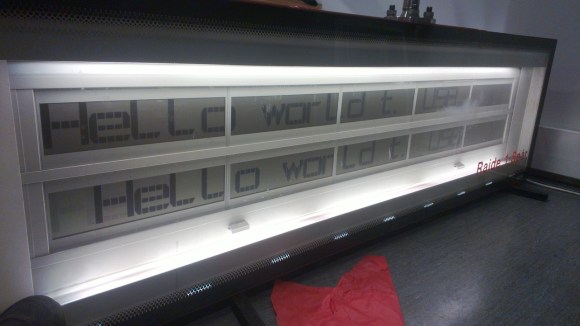This project definitely was a patience tester. As the control system of the Helsinki metro was (and still is) under big renovation, [Konsta] could buy three old information displays for a very cheap price (5€ each). However, these displays came with no information whatsoever about the way to drive them, thus starting a long reverse-engineering journey.
[Konsta] started by taking one apart, discovering that each side of the display was composed of 10 daisy-chained LCD screens and some kind of control box. As you may have guessed, the key to reverse engineering the display was studying the contents of this box. It turned out that the control electronics were composed of an 8085 CPU, some RAM, a peripheral I/O chip, an UV-erasable EPROM chip (containing 32KB of program memory) and an EEPROM.
[Konsta] used an AVR to dump the memory contents of the two latter chips and it was at this part of the project that the Helsinki Hacklab joined in. Together, they reverse engineered the control PCB, studied the assembler code, sniffed the different on-board buses to fully understand how the display could be controlled.
We strongly recommend reading [Konsta]’s writeup, especially knowing that he made this english page just for us!

















Now that’s a hack. Cool display but a bit big for in the kitchen :)
Nice !
I would properly just have contacted Ib Datentechnik GmbH and asked for specs etc. on their emc-28…
But that just me being lazy…
Looks really awesome…
Wow! This thing is monstrous!! 5 euro each?? What a bargain!
Well, it’s either that or the garbage dump. I’m pretty sure the 5e was a nominal gesture.
Here is a demo coded for it, which won the Real Wild Demo Compo at Assembly Summer 2013: http://archive.assembly.org/2013/real-wild-demo/next-train-takes-no-passengers-by-sooda
Konsta is a smart guy. He works for NVIDIA.